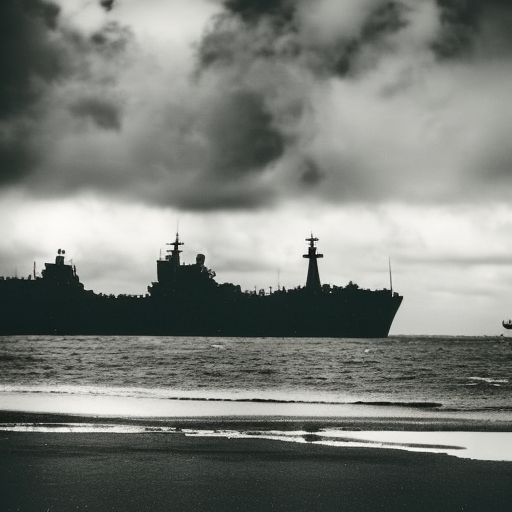Invasion of Normandy: The Allied Assault on Nazi-Occupied France
The Invasion of Normandy, also known as D-Day, was a pivotal military operation during World War II. It took place on June 6, 1944, when Allied forces launched a massive amphibious assault on the beaches of Normandy, France. The invasion marked the beginning of the end for Nazi Germany’s control over Western Europe.
Background
By 1944, the Allies had been planning a major offensive against Nazi Germany for several years. The invasion of Normandy was a crucial part of this strategy, as it aimed to establish a foothold in Western Europe and open up a second front against the Germans. The planning for the invasion involved meticulous coordination between the United States, Great Britain, and other Allied nations.
Operation Overlord
The invasion was codenamed Operation Overlord and was led by General Dwight D. Eisenhower. The Allied forces consisted of over 156,000 troops from various countries, including the United States, Great Britain, Canada, and several other nations. The invasion force was supported by a massive naval armada and extensive air support.
The Assault
In the early hours of June 6, 1944, Allied troops began landing on the beaches of Normandy. The invasion was divided into five sectors: Utah, Omaha, Gold, Juno, and Sword. The American forces landed at Utah and Omaha, while the British and Canadian forces landed at the other sectors.
The assault on Omaha Beach proved to be the most challenging. The German defenses were heavily fortified, and the American troops faced intense resistance. However, through sheer determination and bravery, the Allied forces managed to secure the beachhead and push inland.
Breakthrough and Liberation
Despite initial setbacks, the Allied forces were able to break through the German defenses and establish a solid foothold in Normandy. Over the following weeks, they pushed further inland, liberating towns and cities from German control. The Battle of Normandy was a fierce and bloody campaign, but the Allies maintained their momentum and continued to advance.
Significance
The invasion of Normandy was a turning point in World War II. It marked the beginning of the end for Nazi Germany’s control over Western Europe. The successful establishment of a second front forced the Germans to divert their resources and attention away from the Eastern Front, where they were already engaged in a brutal war with the Soviet Union.
The invasion also boosted the morale of the Allied forces and the occupied populations. It demonstrated the determination and capability of the Allied powers to defeat the Nazis and restore freedom to Europe. The liberation of France and the subsequent advance into Germany paved the way for the eventual defeat of Hitler’s regime.
Legacy
The Invasion of Normandy remains one of the most significant military operations in history. It showcased the effectiveness of amphibious assaults and the importance of meticulous planning and coordination. The lessons learned from D-Day continue to shape military strategy and tactics to this day.
The beaches of Normandy, where the invasion took place, are now hallowed ground. They serve as a reminder of the sacrifices made by the Allied forces and the price paid for freedom. The Normandy American Cemetery and Memorial, located near Omaha Beach, stands as a tribute to the thousands of soldiers who lost their lives in the invasion.
In conclusion, the Invasion of Normandy was a pivotal moment in World War II. It was a meticulously planned and executed operation that successfully established a second front against Nazi Germany. The bravery and sacrifice of the Allied forces paved the way for the liberation of Western Europe and the eventual defeat of Hitler’s regime. The legacy of D-Day continues to inspire and remind us of the importance of freedom and the cost of achieving it.












